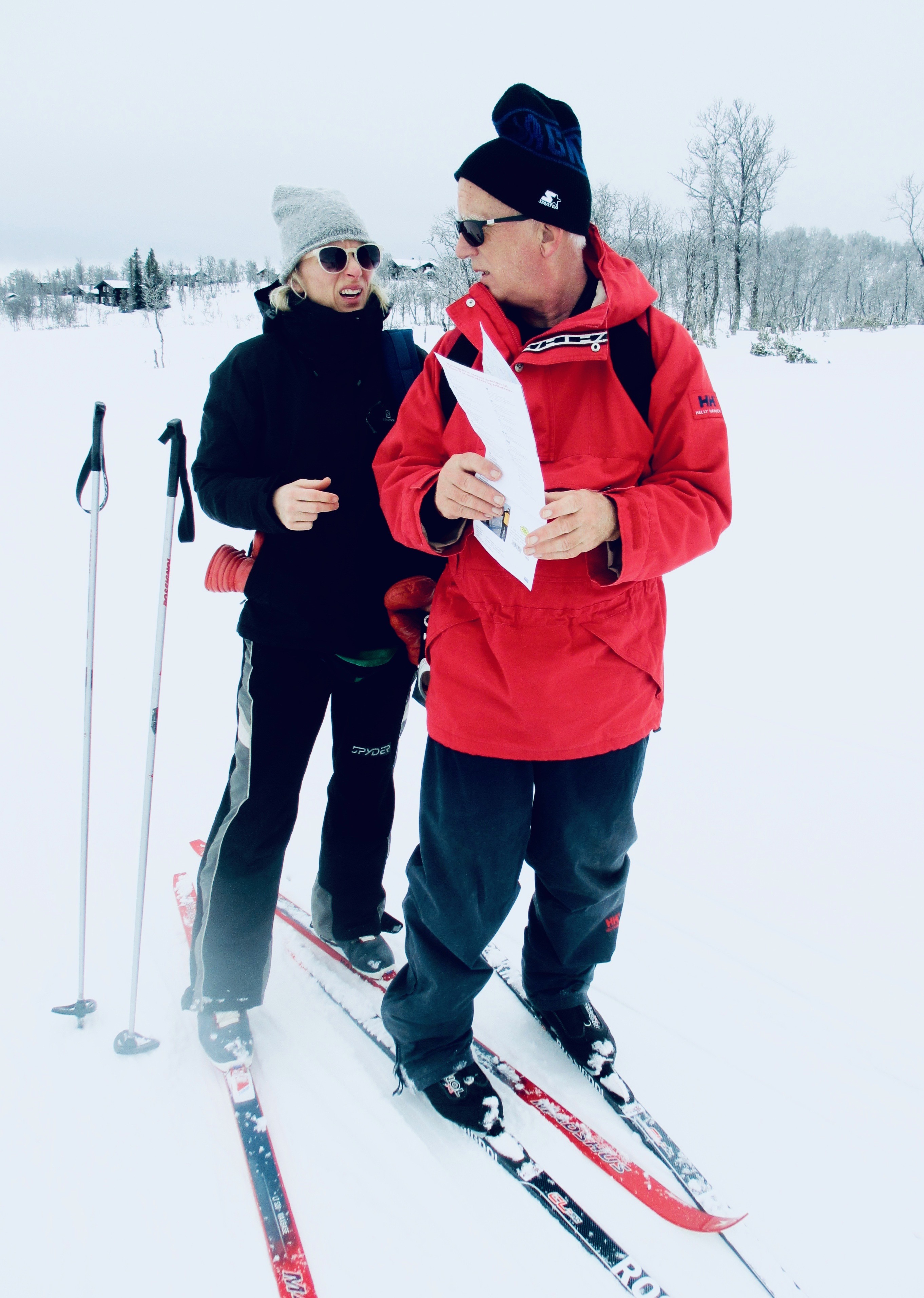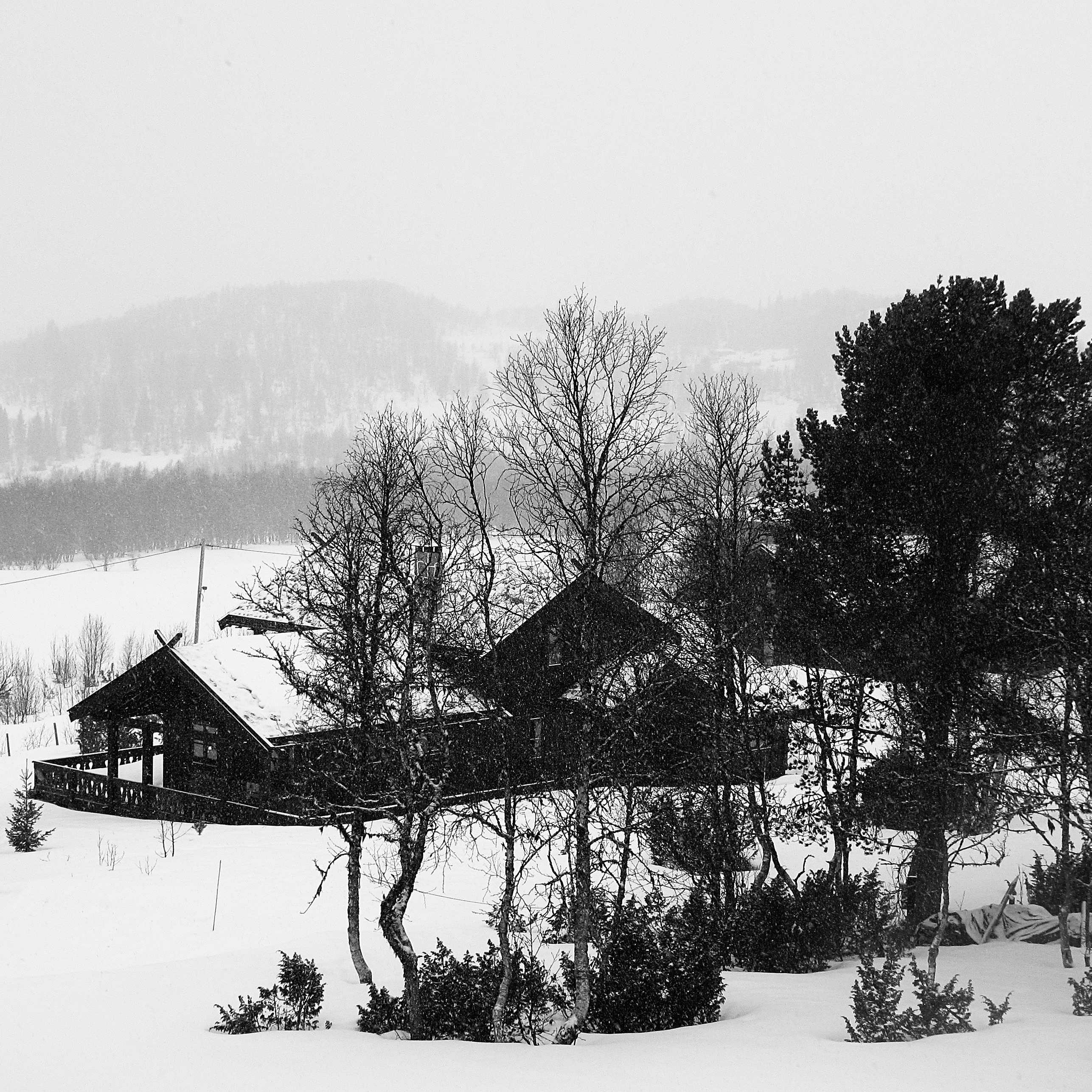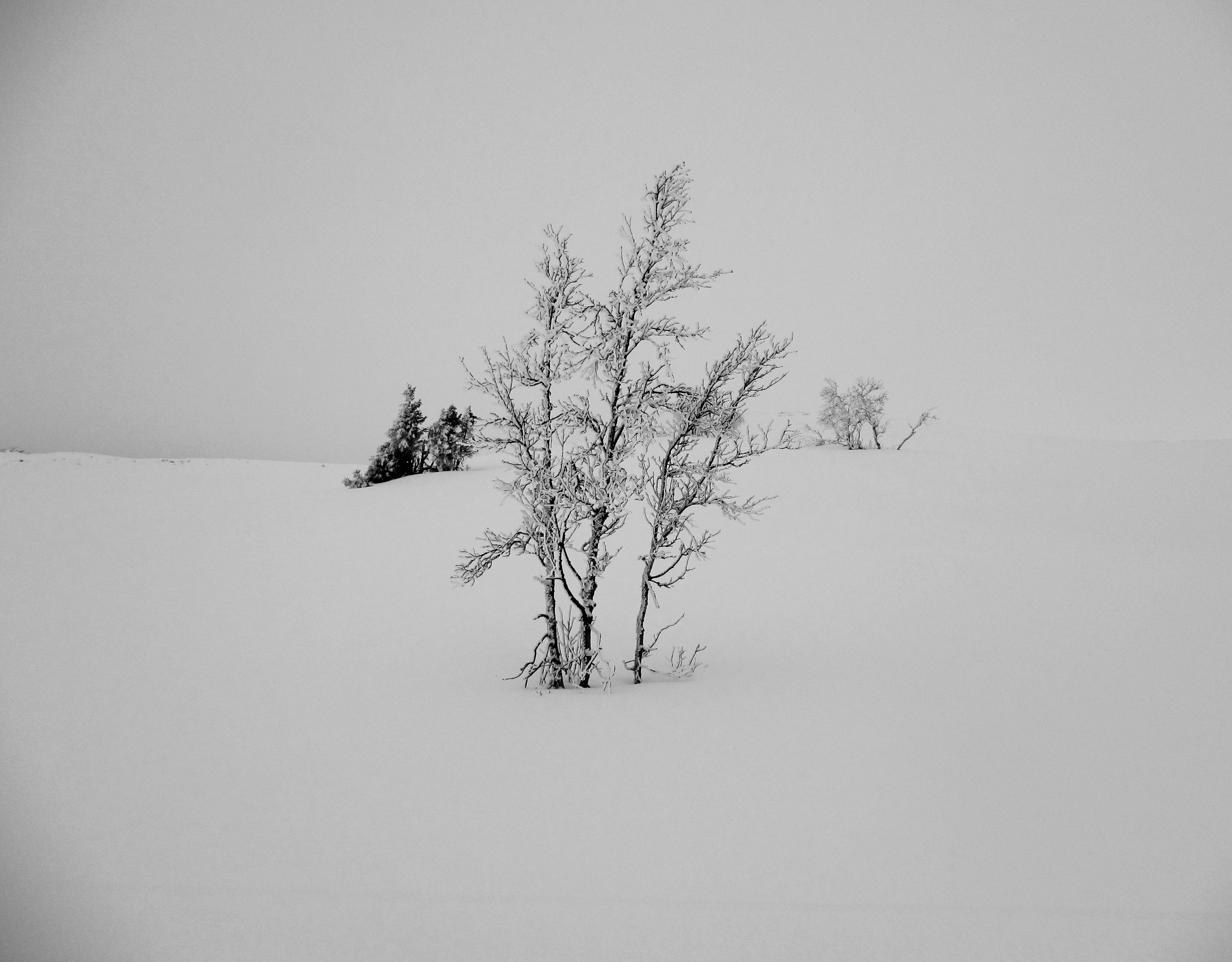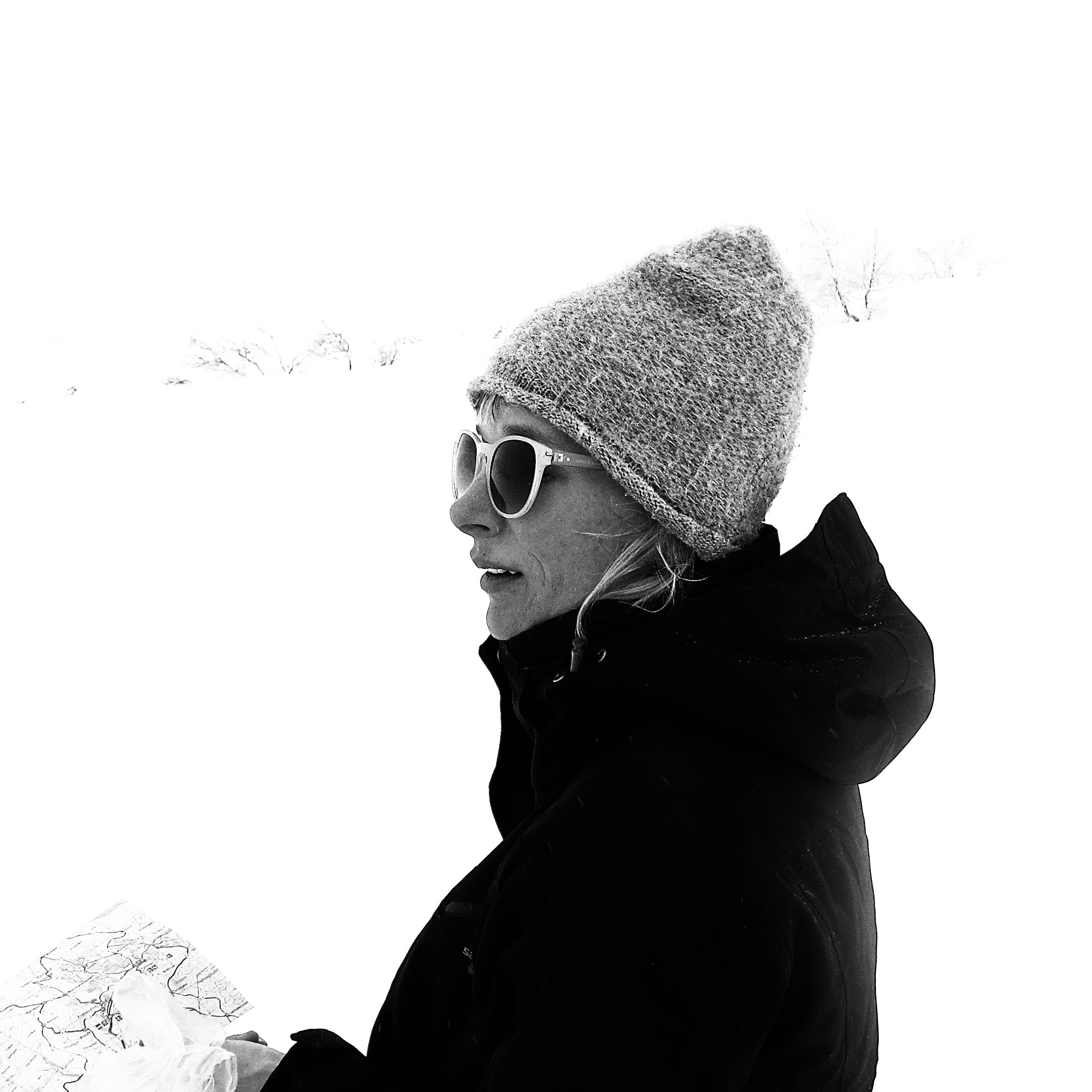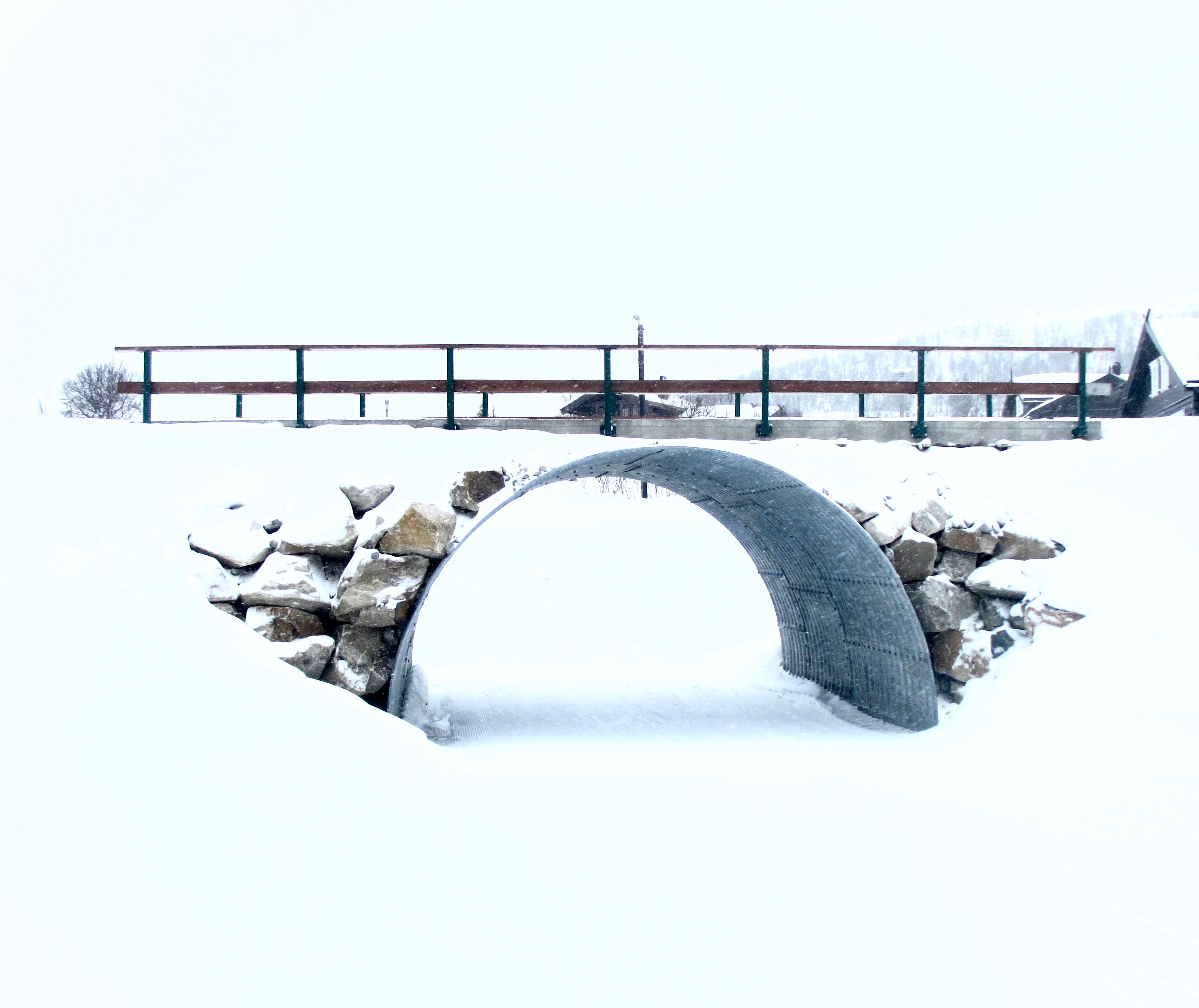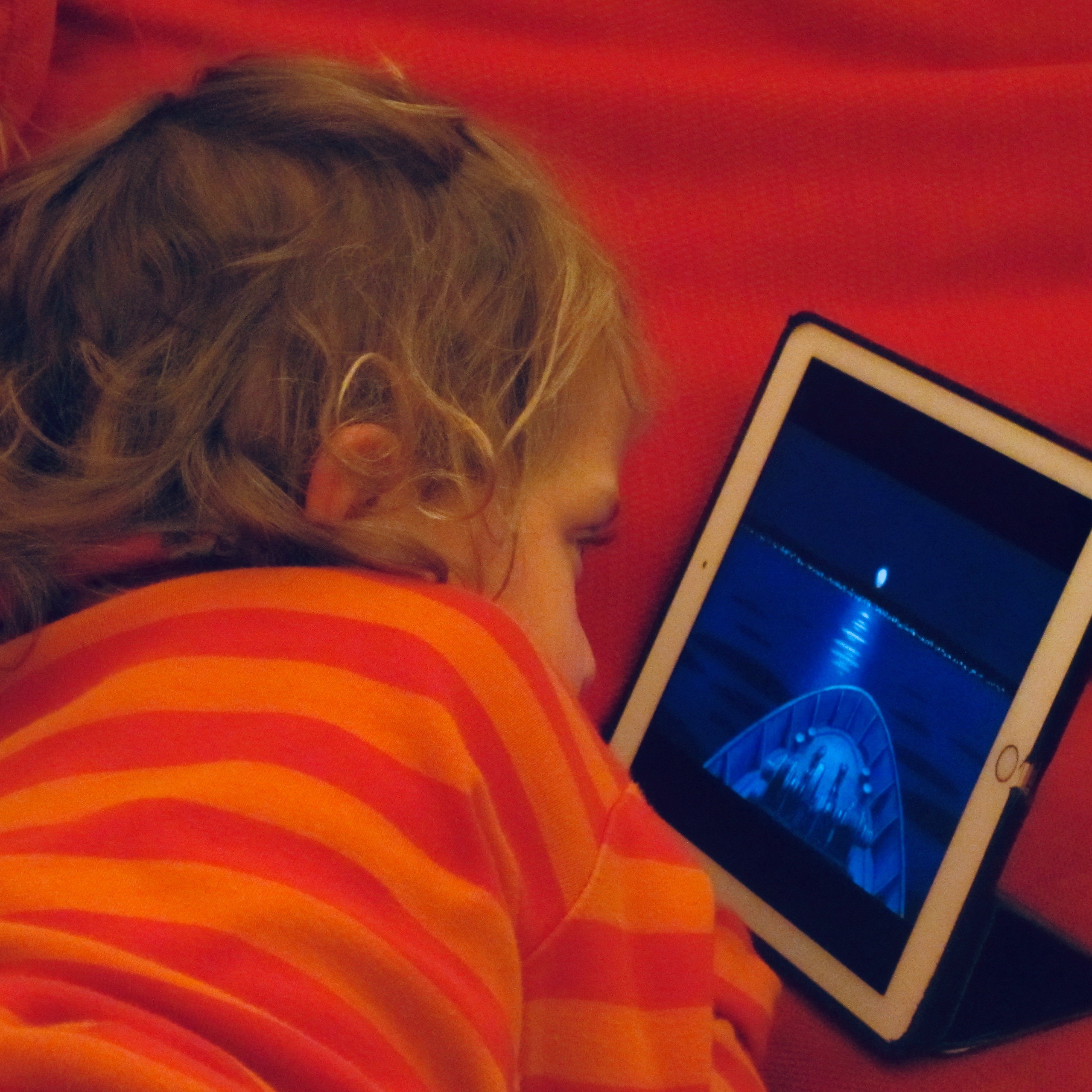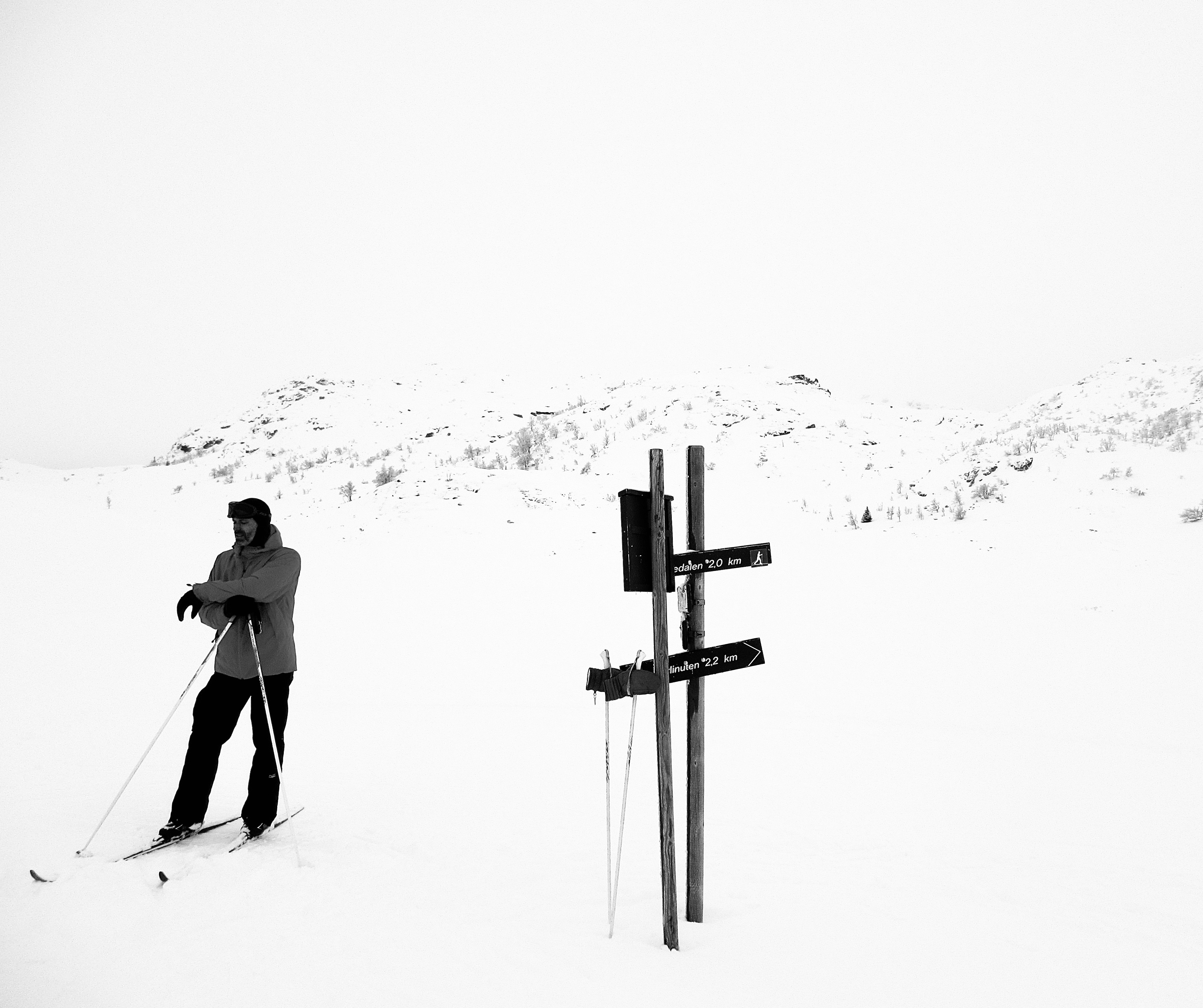Response 24 - White Family Holiday
Dear Marie,
Thank you for Task 24. Here’s the requested scrapbook of our family skiing holiday in Norway, overdue but still undercooked because I caught the same cold our daughter Lisa got on holiday.
Enjoy!
Alan
To be white is to be Nordic; to be Nordic is to be white. These are associations centuries in the making.
(Lundström and Teitelbaum 2017: 151)
It was long drive to Norway from Horsens. Not that I was behind the wheel in the cramped car – that was grandfather’s job; in fact, I’m not even sure I know where we went. A winter hotel that seemed deep in the country, several hours from the ferry port, though the glimpse of a map showed that it wasn’t even that far north. It was white, though. Massive lakes invisible under snow. Hills crisscrossed with ski tracks renewed daily by the community snow ploughs. Fit locals loping comfortably across the featureless uplands, looking down their poles at Danes buried snot-deep in route maps.
My holiday reading was given to me as a present by my friend Denis Flannery: D.A. Miller’s book on Alfred Hitchcock’s ‘secret style’, the moments in Hitchcock’s films hidden from or ignored by any but the most attentive ‘Too-Close Viewer/Reader’. I cared less about Miller’s subject than I did about the questions of methodology he raised, the stakes of close reading and the character of the close reader. The book was almost perfectly written, though immodestly bedecked with Latin tags. Marie was reading Elena Ferrante, who I have never read and who she finds a little middlebrow. I think D.A. Miller might be my enemy.
Lisa was delighted at her first ever skiing lesson. In a tone of authority, she repeated to me her tutor’s instructions, tutting at my clumsiness on unfamiliar skis. Then she got ill and spent days on the sofa, watching children’s TV dubbed in Norsk and old Hayao Miyazaki movies I had put on the iPad for her. I felt proud that Lisa liked these. The world of culture the white birthright of a poorly Danish-Irish kid kept good tempered with ‘Brannmann Sam’ and animé.
Close reading has fallen out of favour in the UK academy (D.A. Miller says it is out of favour internationally). In the light of a national research audit culture that insists on demonstrable reach and value for money, intensive attention to single texts has come to seem a narcissistic indulgence. What is delicious in Hidden Hitchcock is the unapologetic and obsessive attention to trivial (pp. 10, 42, 112) aspects of limited or doubtful significance in the (three) films it studies. Instead of proclaiming the importance of his work, Miller vaunts the idiosyncrasy of his findings.
The customer-facing hotel staff were Norwegian, but a small team of Poles cleaned the rooms and clutched cigarettes during their breaks in the snow outside the covered passage that linked the main building to the apartments where we stayed. An impossibly young Polish man described as a janitor came to fix our lights and kindly told me where I could find a staff washing machine to clean my sweat-drenched ski clothes. I wanted to ask him how he had found his job here beyond the European Union. Did he send his wages home? Did Norwegians suffer from xenophobia?
It occurred to me only when I read the blurb on the back of the Hitchcock book that I had written to D.A. Miller once, because he did a book on Felllini’s 8½ and I wanted to invite him to write for an Italian studies journal I was editing. His ‘no’ felt rather patrician, I remember, but I now realise he was gracious even to respond. Turns out he’s a major figure, fellow of the American Academy of Arts and Sciences, even a Wikipedia entry: ‘His work has been enormously influential in a wide range of fields in literary and cultural studies, including narrative theory, the history of the novel, film studies, and gay studies.’
The hotel was overrun with Danes, surprised to have pool sauna pleasantries returned in English. The car queue for the packed ferry had disclosed just a handful of German or Dutch license plates. This pilgrimage north seemed essentially a Danish ritual. They had migrated in impressive numbers, given it wasn’t an official holiday week, from one Scandinavian nation to another, filling car boots with box wine and other essentials because of the prices in Norway. In search of whiteness. For the snow. For a whiter whiteness.
I came across this comment from Judith Halberstam (2007: 182): ‘People like to say of their work that “this is part of a much larger project,” but I like to imagine that my work is “part of a much smaller project,” one that […] finds insights in eccentric and unrepresentative archives.’ And this: ‘Queer is often part of subjugated knowledges simply because it has a hard time presenting itself as relevant knowledge.’ Considered in the white light of this, close reading seems quintessentially a queer methodology. D.A. Miller (p. 19): ‘I conclude that my archive is a bit off—as necessarily decided by the chance circumstances of a particular person as is too-close viewing itself.’
Your thoughts get lost in the snow when you’re skiing cross-country. I reflected that this project you and I are engaged in, Marie, and whatever else it might be, is also excruciating. The project asserts that the personal is the academic as it performs its public variety of couples therapy. We imagine this is admirable — I have flattered us with talk of our challenge to scholarly pseudo-objectivity, invoking Karen Barad and the like to characterize our method as an apparatus that takes account of social factors and situatedness. But putting yourself at the centre of your academic activity, as in feminist or queer work, is justified by the marginalization previously suffered. It should be a corrective. What does it mean for two straight white bourgeois to publicly massage the micro differentials in their status like it was political? We are two avatars of the mainstream, documenting our dabblings here on this website in some pompous version of Instagram.
Let me admit it: my work has always been composed on behalf of the mainstream. I imagined this was an ethics. This was true of my book on the cinepanettoni, the ableist/racist/sexist Italian film comedies worshipped at the box office but denounced by the critics; it was true of my work on middlebrow historical cinema, despised equally for political and aesthetic reasons by most of my academic colleagues. I have built my career on a vulgarity of taste (volgare [Latin] = ‘of the people’). But close readers proclaim themselves an aristocracy whose licence is their individual sensibility (as such, close reading is akin to camp). D.A. Miller acknowledges as much. The average spectator (me) can never be a too-close viewer like him. Such a viewer would merely insert a ‘film into the déjà vu of films, novels, myths known beforehand’; would be part of ‘the very public that classic Hollywood cinema, with its abundant continuity rules for film form, and its endless recirculation of stereotypes in film content, does everything to encourage and reward’ (p. 170). The political charge of his work comes from the celebration of his own eccentric cinephilia. The charge of mine aspires to come from tracing the dignity in mundane entertainment. I am an enemy Miller need never remark.
The ferry back was less crowded but there was the same Titanic crush on the narrow staircases from the car levels to the hospitality decks. The passengers seemed mostly to be families – often composed, like us, of three generations – and there was none of the breakneck drinking I knew from the Rosslare-Fishguard boat in the days before cheap air travel. I mentioned this to grandfather and he said that you sometimes saw the Swedes getting hammered on the cheap ferry booze on their way to lose a weekend in Denmark. I mentioned it to grandmother and she said the same thing about the Norwegians. I smiled to myself, reminded of something I spotted in a British magazine: ‘the more northerly Nordics all regard the Danes as subtropical fun-lovers. The journalist Per Thiemann […] once had a Norwegian girlfriend. “Oh, you Danes,” she said one day, “you’re the Brazilians of Scandinavia!”’ Whiteness is always a question of perception and degree.
References
Halberstam, Judith et al. (2007). 'Theorizing queer Temporalities: A Roundtable Discussion'. GLQ 13:2-1, 177-195
Lundström, Catrin and Bejamin R. Teitelbaum (2017). ‘Nordic Whiteness: An Introduction’, Scandinavian studies 89:2, 151-158
Miller, D.A. (2016). Hidden Hitchcock (Chicago: University of Chicago press)


